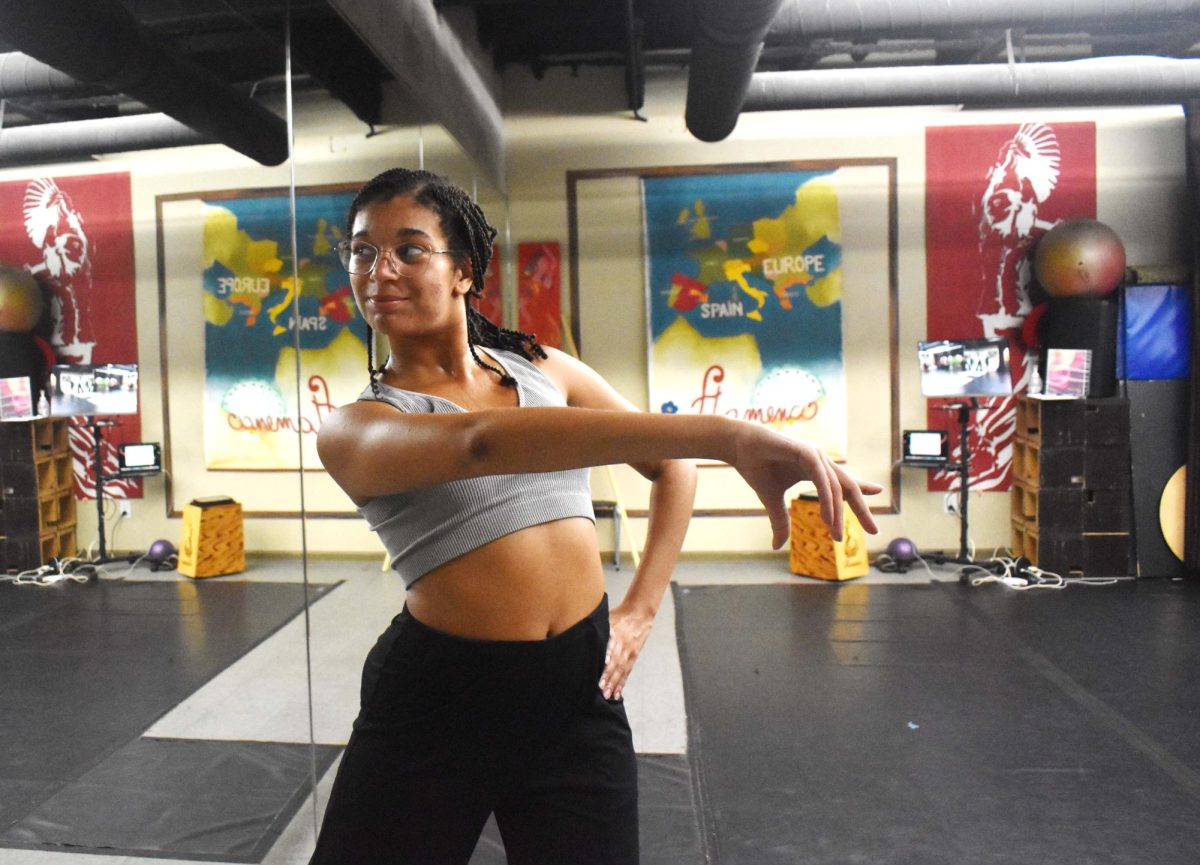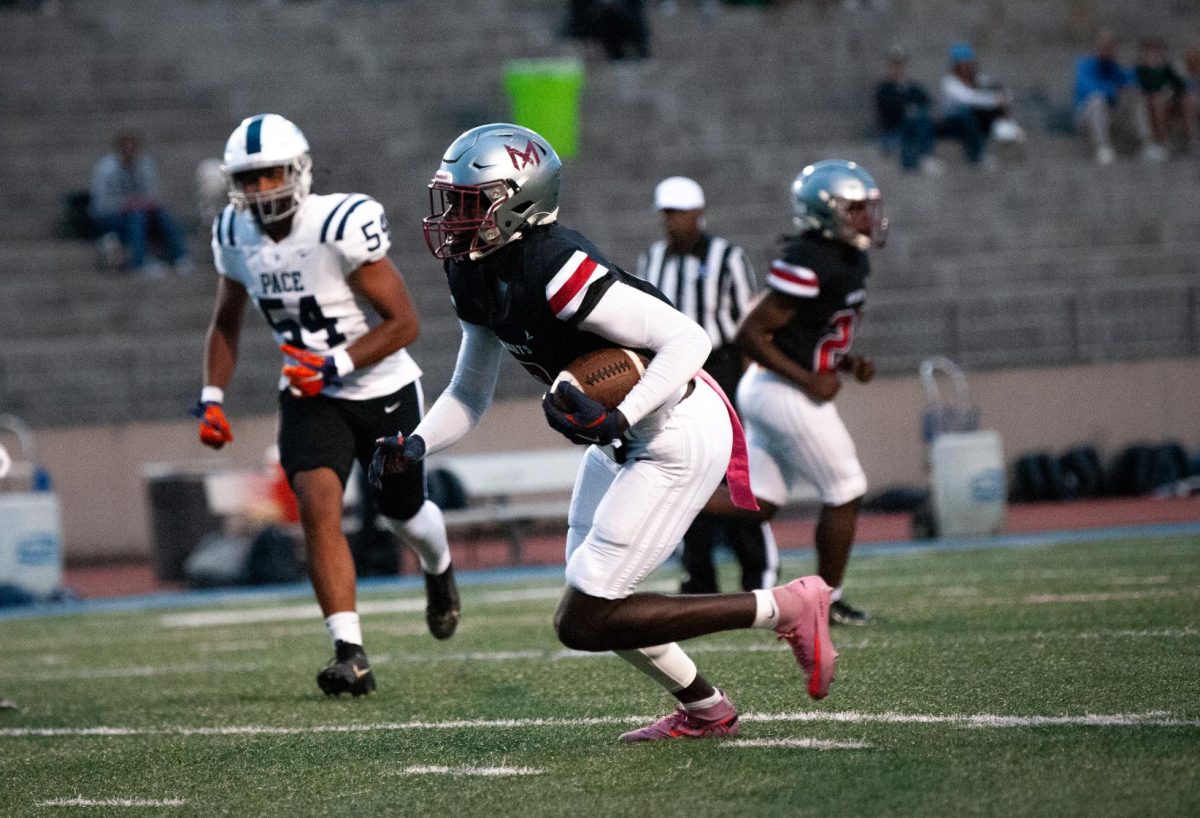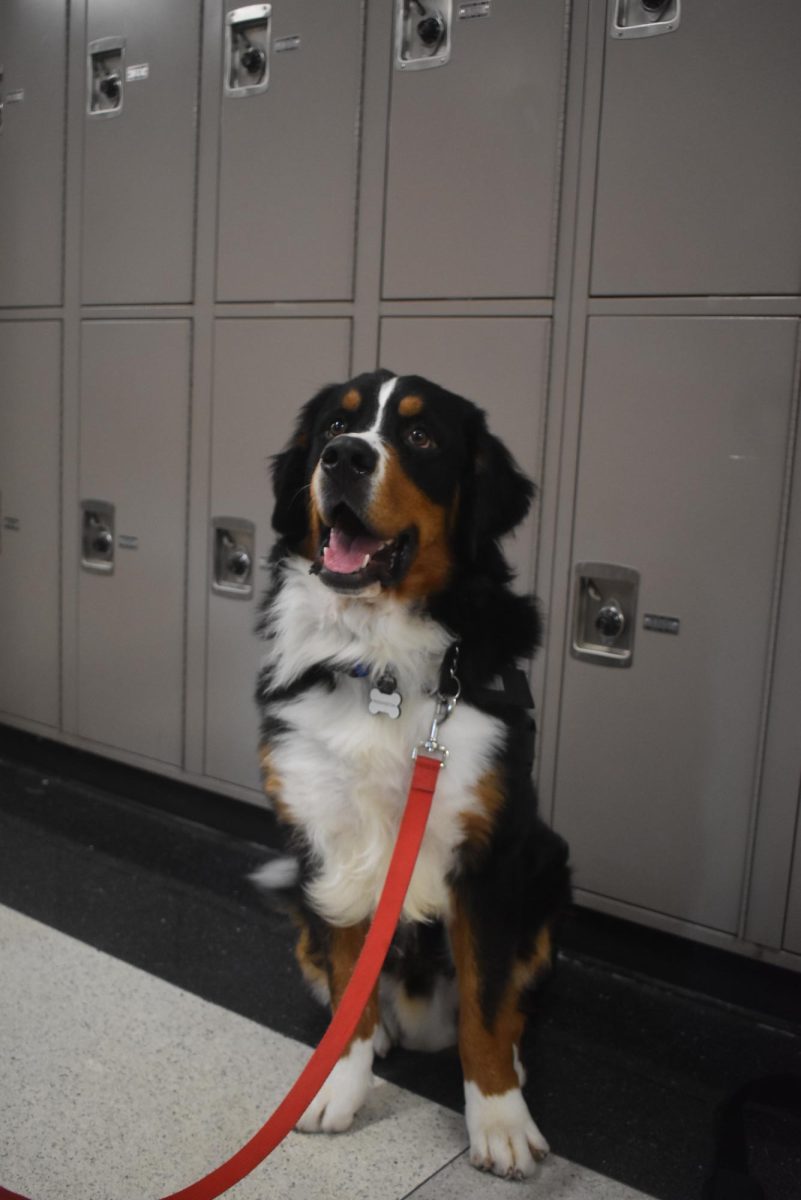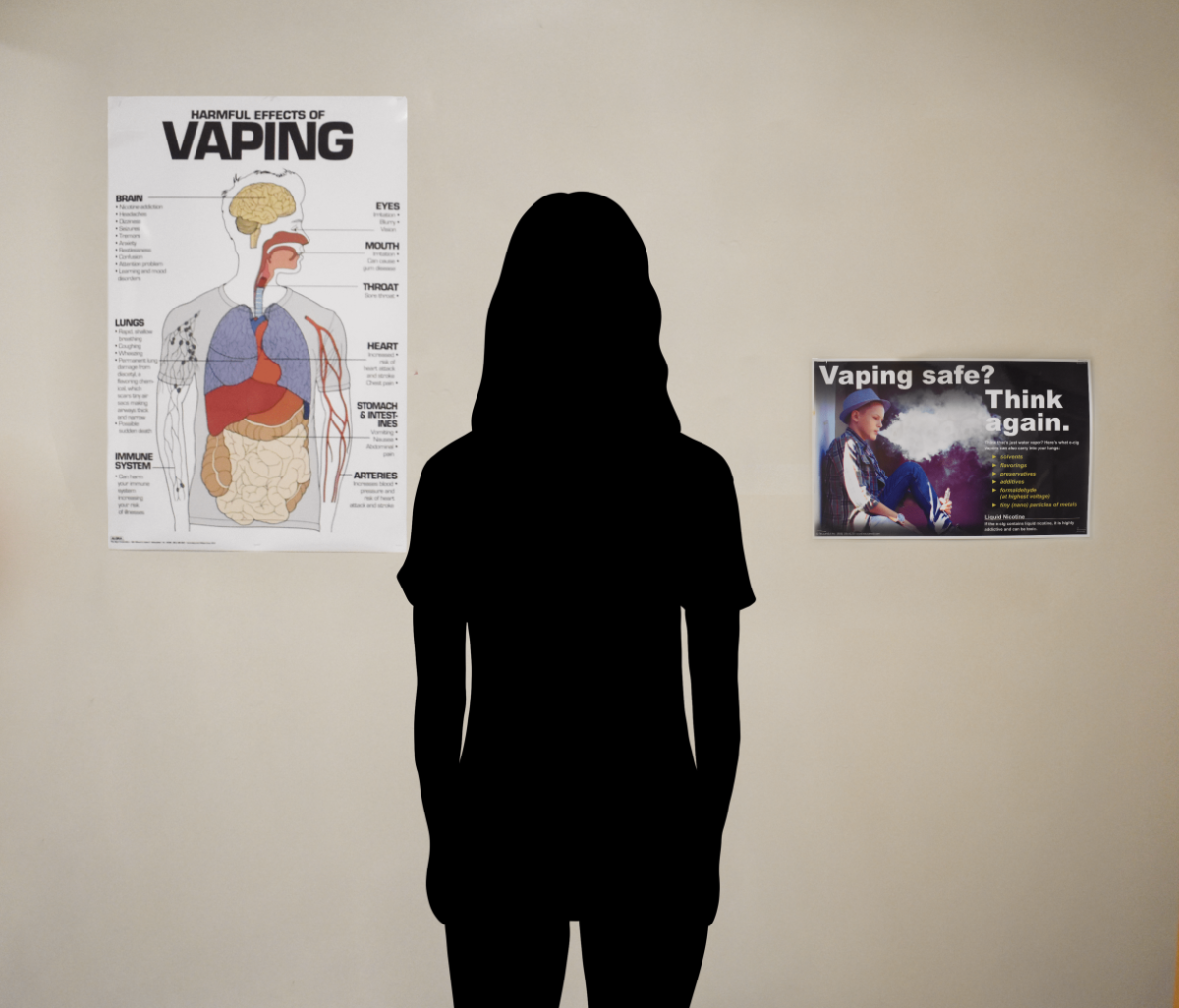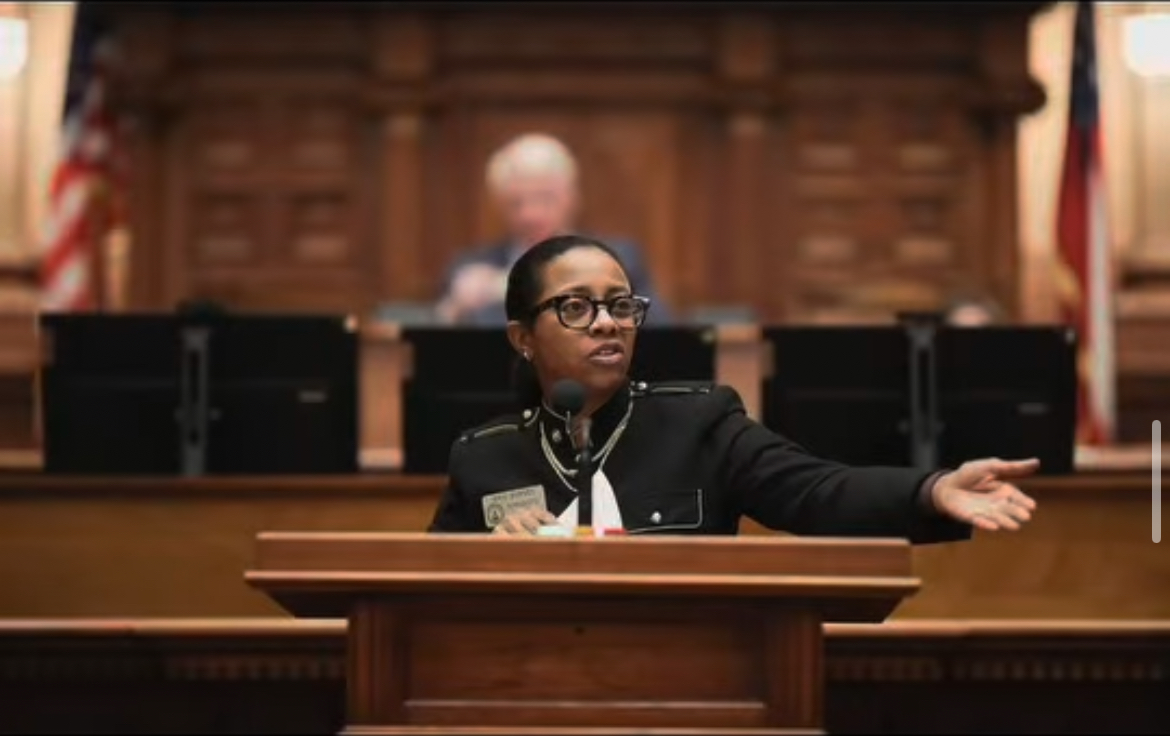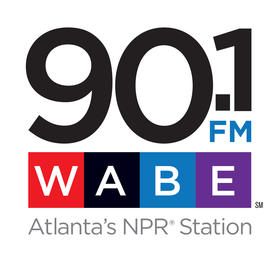
Lining the walls between the library and cafeteria, statistics tell a glowing story of Grady: the school boasts an average SAT score a full 180 points above the average APS SAT score (1335) and 498 points above the lowest average (Crim’s 1017).
Although Grady compares positively to other public schools in the system, how does the school’s academic and social environments measure up to its private school counterparts such as St. Pius, Paideia and Woodward Academy?
‘Classes I took at Woodward were harder than college’
At Grady, students log more than 4,000 visits to the College and Career Center each year. The CCC invites college recruiters across the nation to meet with students and inform them about colleges. The CCC volunteers also help the students through the college application process—from editing essays to helping students evaluate their postsecondary options.
At Woodward, college preparation and counseling marks the cornerstone of the school’s purpose. Woodward dedicates one year of English to SAT essay writing. College counselors at Woodward spend the majority of their time helping juniors target the right colleges and assisting seniors as they apply to college. As a result, 100 percent of the class of 2013 was admitted into at least one college. Grady, on the other hand, struggles to reach an average high school graduation rate registering slightly below 80 percent in 2012, according to the Georgia Department of Education.
Woodward Upper School assistant principal and AP U.S. Government teacher Jonathan Merrill illustrates the importance of college preparedness at Woodward.
“What we hear all the time when our students come back from college is ‘I felt so prepared, college is actually easy; some of the classes I took at Woodward were harder than college,’” Merrill said. “We strive to produce students that are absolutely prepared for college.”
Similar to Woodward, Paideia also has personalized and individualized college counseling. The school assists every junior and senior.
Senior Nathan Haskell, who attended Morningside Elementary and Inman Middle School, transferred to Paideia for high school. Once Haskell’s parents witnessed his brother’s high school experience, they wanted Nathan to have the same.
“Paideia prepares you well for a majority of colleges,” Haskell said. “The high workload and difficulty of work is very good for college.”
Haskell voices a similar sentiment of other private-school students who feel their hard workload prepares them for college. Haskell. however, does not believe that his college choices would have been different had he continued from Inman to Grady.
“If I went to Grady, I would still most likely go to UGA,” Haskell said. “My GPA would most likely be higher, but I think that I would not have needed to try as hard.”
Like Woodward and Paideia’s, St. Pius offers a College 101 class that students attend during lunch to help with college counseling as well as an SAT class taught by its teachers outside of school hours. According to the school’s website, St. Pius prepares its students through its rigorous curriculum for both SAT and college.
Independence and APs
Along with the CCC’s college counseling, Grady prepares its students for college through an abundant of available Advanced Placement courses and honors classes. Since the course rigor and amount of homework is sometimes lighter than Grady’s private-school counterparts, some Grady students feel a sense of academic freedom.
Sophomore Alec Meachin, who transferred to Grady from Woodward at the end of his freshman year, notices the contrasting characteristics at both schools.
“Grady teaches you to be more independent,” Meachin said. “You learn self-control.”
Meachin explained how he struggled at Woodward and now excels at Grady. Teachers do not remind a student to do their work, Meachin explained. Rather, it is up to the student to do it.
Woodward has a rigorous curriculum, challenging students and preparing them for college. Class size is limited to 18 students, and college-preparatory programs push students to do better, Merrill explained.
At Woodward, however, students find it harder to enroll in AP classes, submitting grades, teacher recommendations and PSAT scores to compete for spots. Merrill said only 33 percent of Woodward students take one or more AP’s.
“At Woodward our position has been that students need to be at the very top of their class in order to take that most rigorous level of coursework that we offer,” Merrill said.
Although Haskell had a successful transfer, not all students have shared his experience. In 2011, APS was on the verge of losing its accreditation due to a cheating scandal, which led to a rise in Inman eighth-graders applying to private high schools the same year.
A total of 47 eighth-graders as well as a few Grady students applied to private high schools that year, according to seventh and eighth-grade counselor at Inman Middle School, Sharon Walz. Senior Salome Kakalashvili is one of the students who transferred out of APS due to the accreditation scare.
“After the cheating scandal ended and APS was fine, I went back to Grady,” Kakalashvili said. “I did not find Pius’s education that much better than what I was used to at Grady.”
Differences in Diversity
When it came to diversity on campus, not all private schools are equal. Woodward’s goal is to give a real-world experience, which they do as far as race, religion and geography, Merrill explained.
“Diversity is very important to Woodward,” Merrill said. “We have a lot of different types of diversity, but we definitely acknowledge that socioeconomic diversity is where we lack the most. They go to college with a confidence and a level of being ready.”
Haskell has experienced the benefits of Paideia through devoted teachers, smaller class sizes, and friends. He has developed personal relationships with many of his teachers, who he says love to teach and make him actually want to learn.
“If you are struggling, the teachers will do whatever they can to get you back where you need to be,” Haskell said. “When I went to Inman, I liked some of my teachers, but they didn’t have the same motivation that my new teachers have.”
Grady’s demographics differ significantly from that of Woodward, Pius and Paideia. With the private schools, minority groups such as African-Americans, Hispanics, Asians, and others comprise less than half the entire student body. Here at Grady, minority groups make up more than 70 percent of the student body. Family income as well differs greatly. Most of the parents at Grady could not afford Woodward’s yearly tuition of $22,950.
Academy Leader Willie Vincent speaks highly of Grady and its diversity.
“Grady gives that real-world experience,” Vincent said. “Grady does a good job on capitalizing the common goal.”
Merrill is confident in the college preparedness at Woodward, as well as the ability of students adjustment to it.
“Every year we get students who come in from public schools who have been in all honors classes and then they struggle, at first, but eventually they figure it out,” Merill said. “It’s just a different level of expectations, a different level of homework, and it takes some time. But, 90 percent of the time they adjust; they figure it out.”


